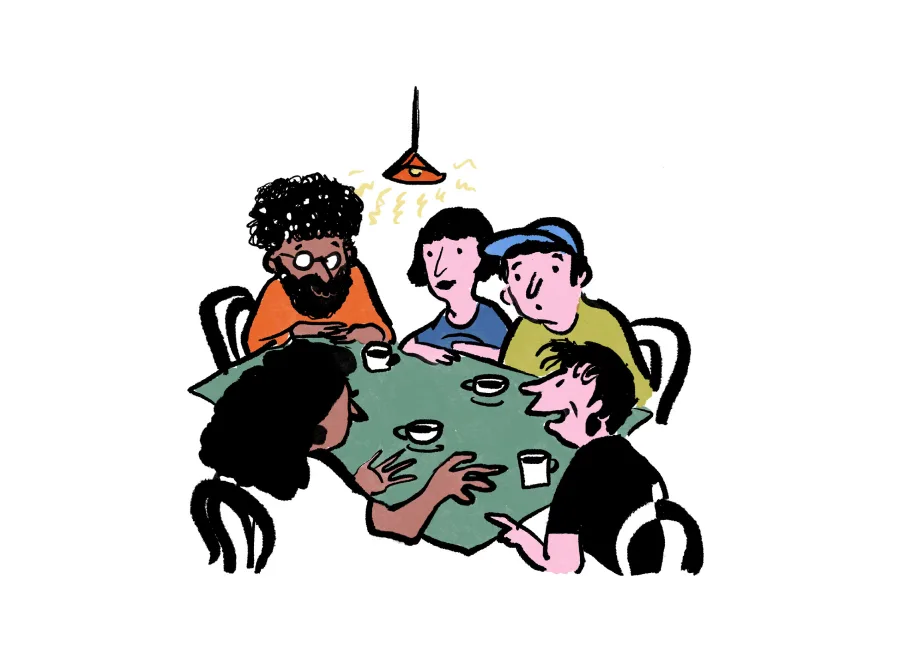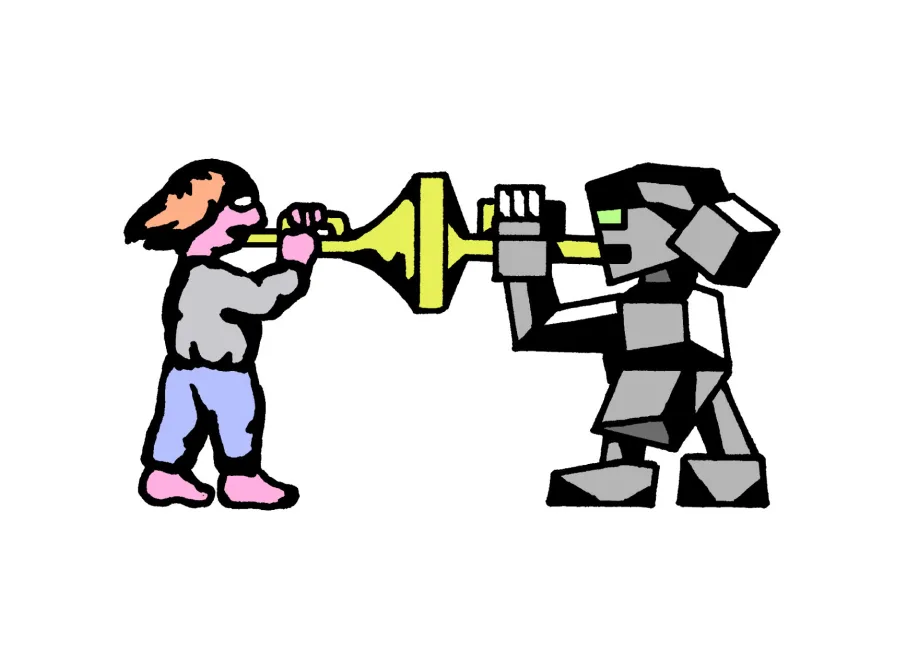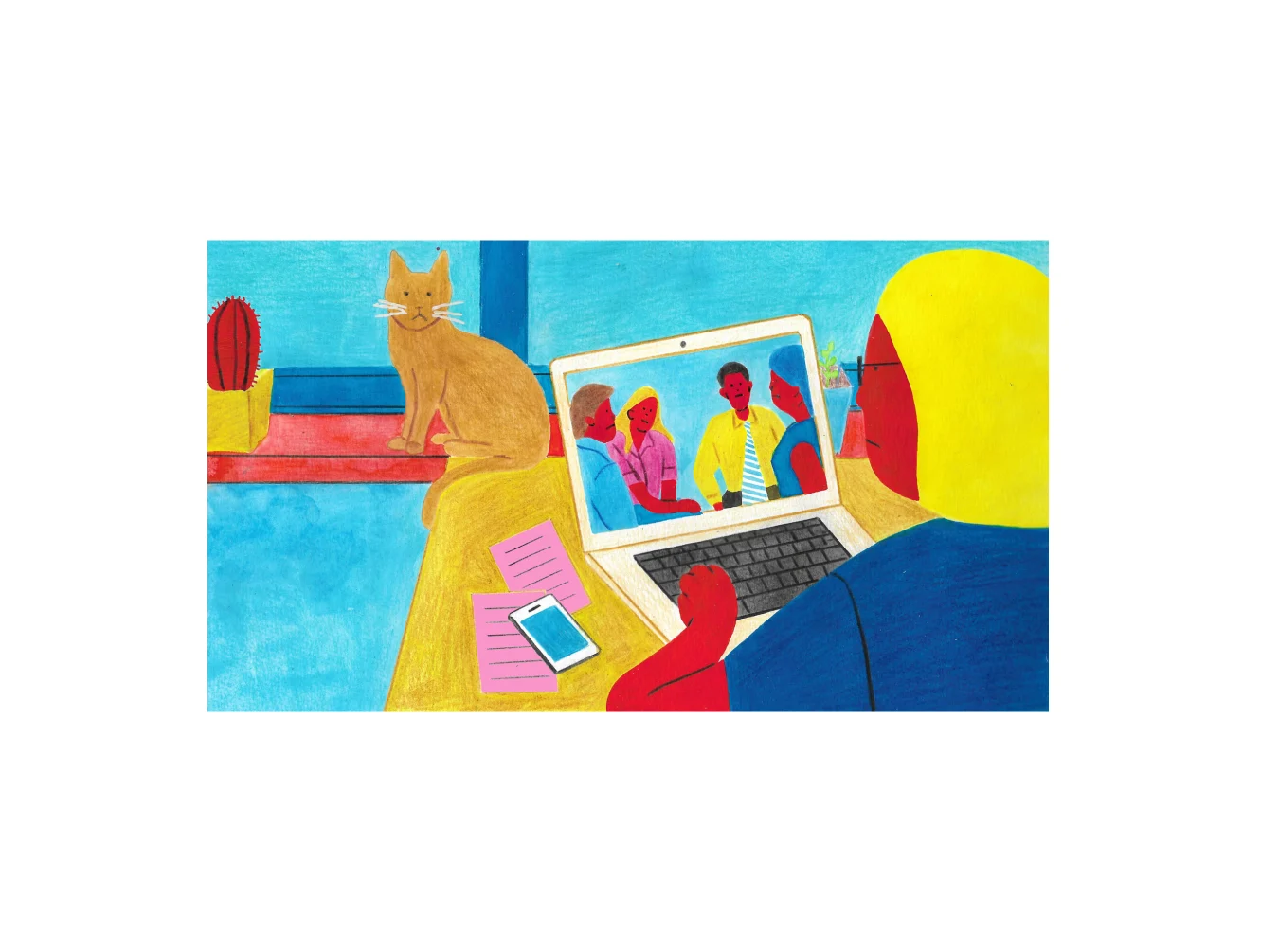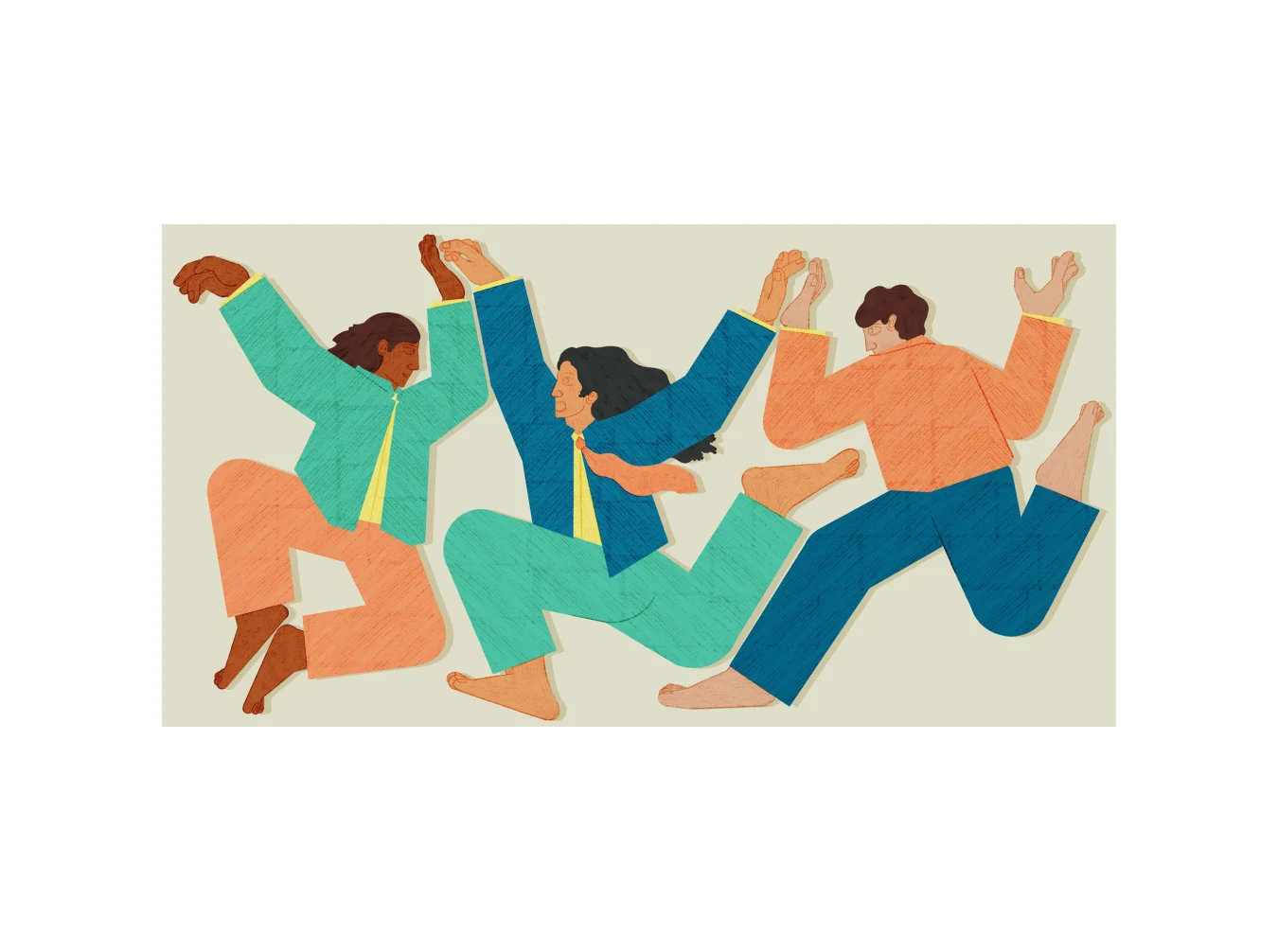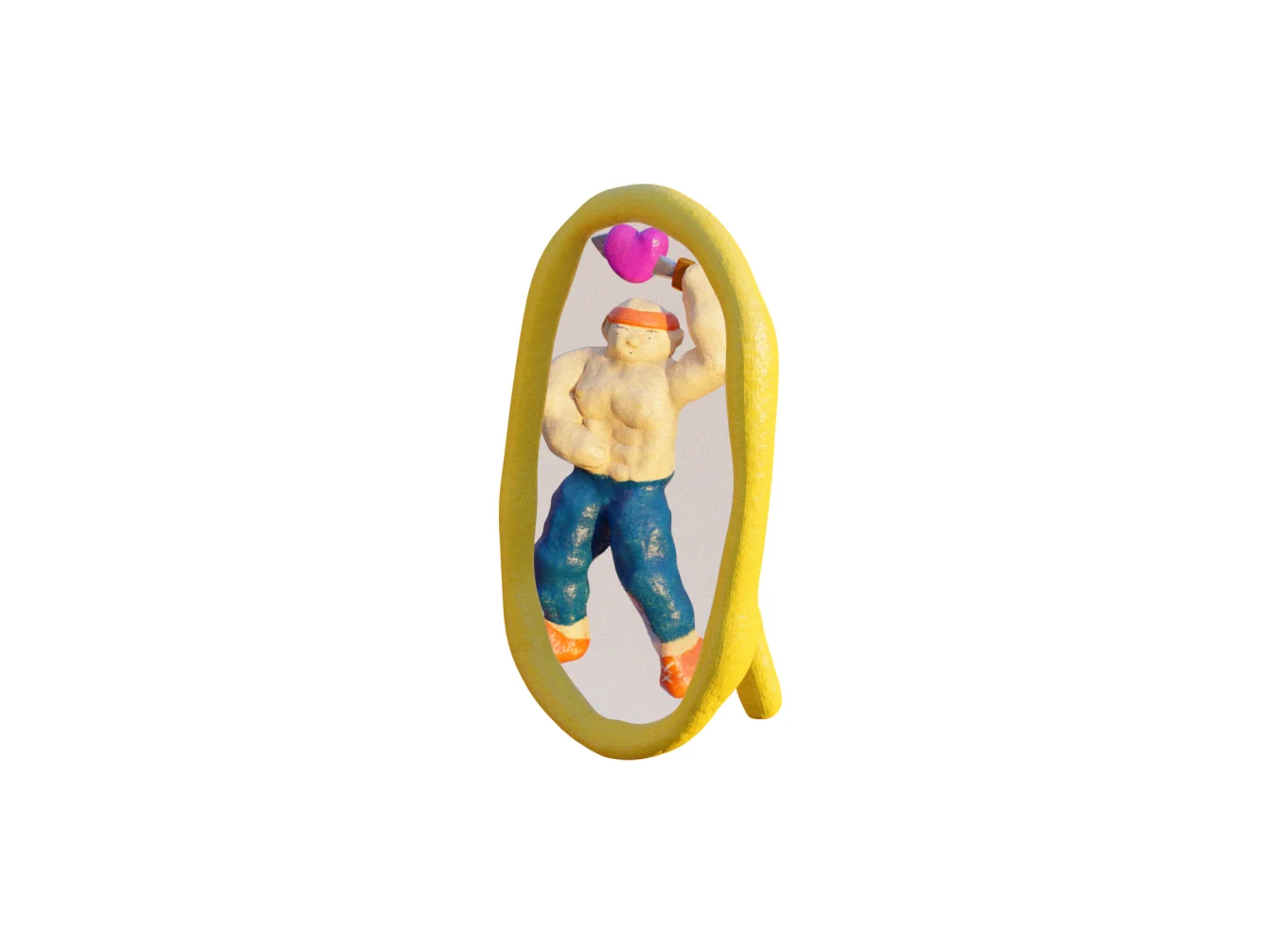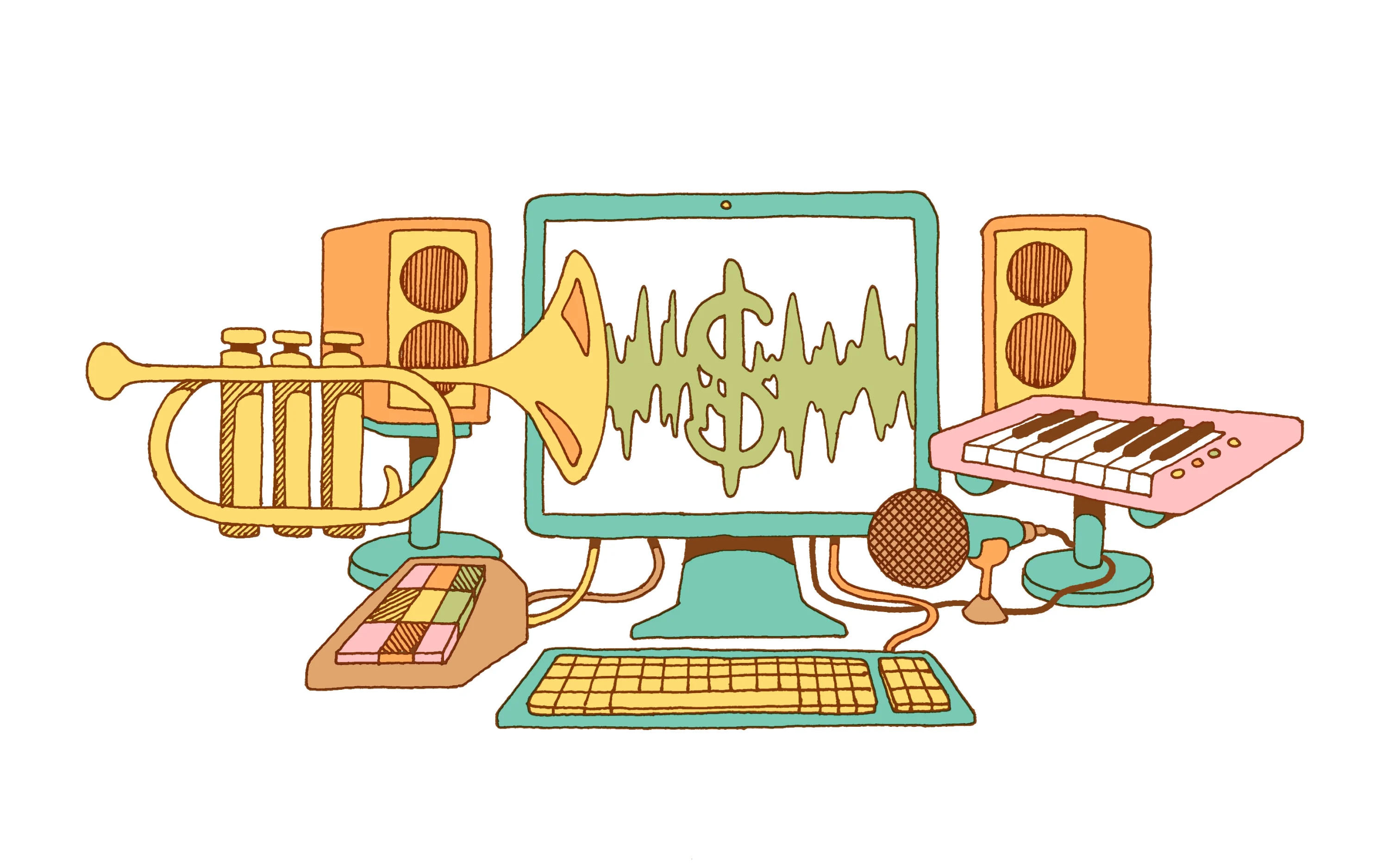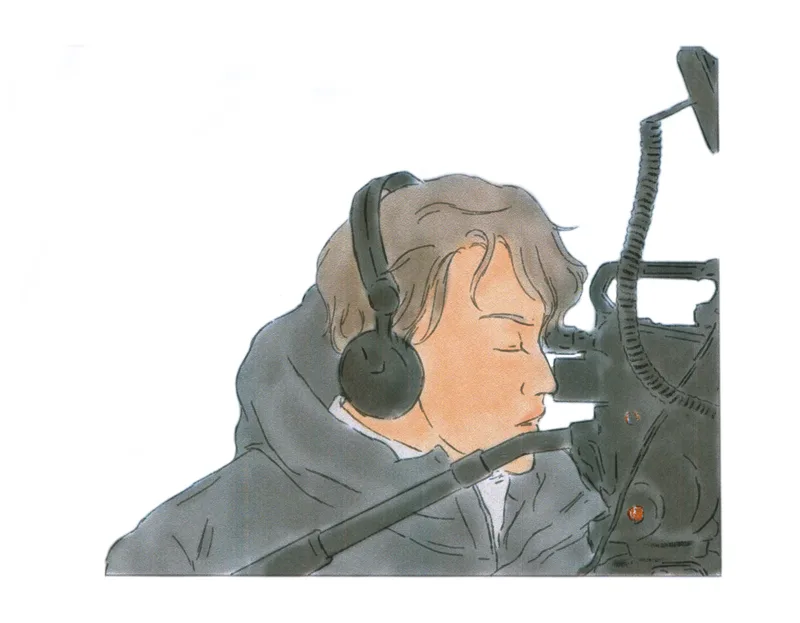
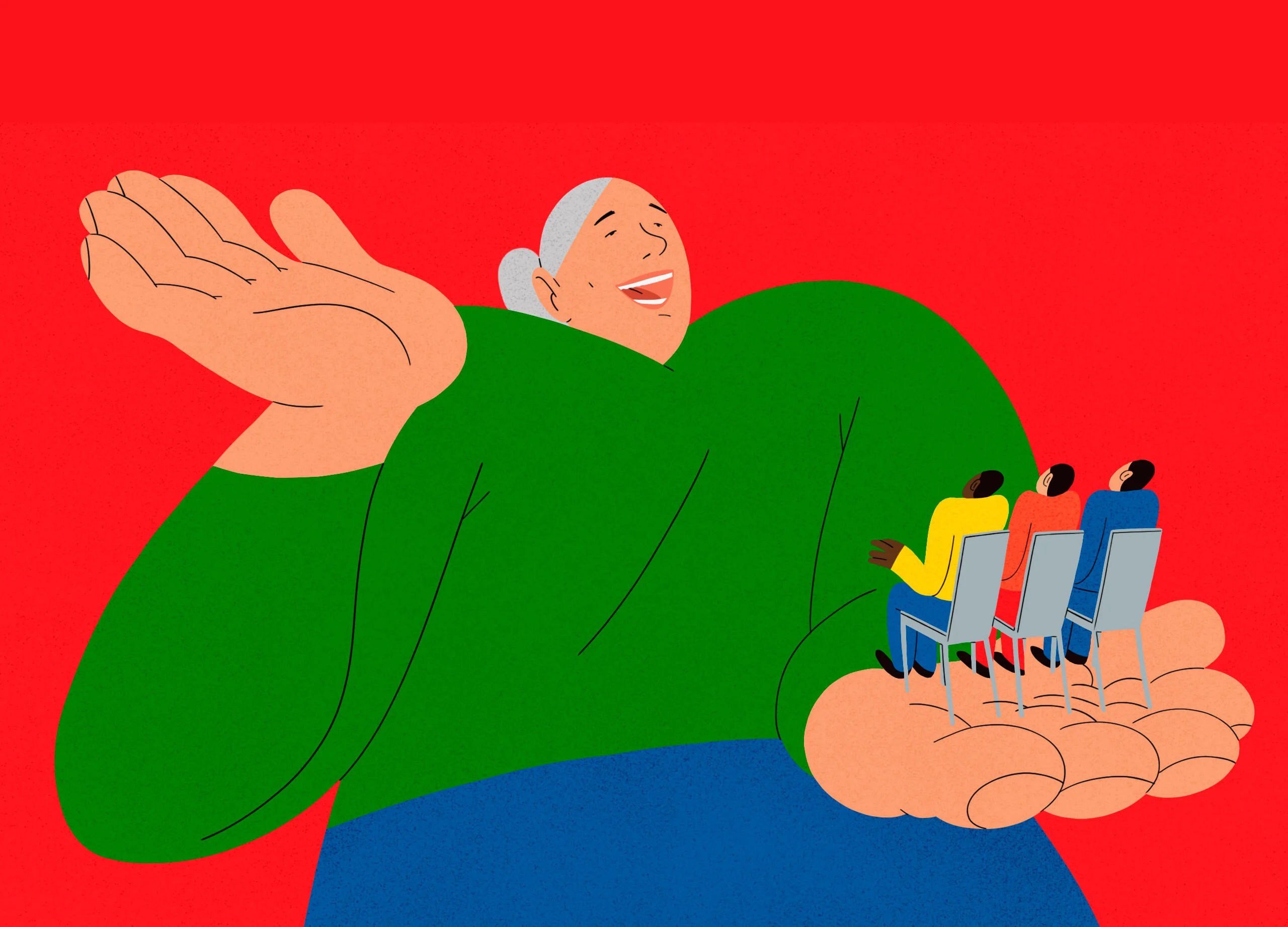
There are lots of things for creatives to think about beyond having good ideas. We’re here to help, with our advice series Stuff They Don’t Tell You. Here, James Cartwright has some hints and tips for dealing with those pesky clients.
Illustrations by Alva Skog.
You’re sat opposite a new client. The conversation is going well. They laugh occasionally as you speak – because you’re funny, GOD you’re funny – and they smile warmly with their whole face, not just the mouth. You’ve got this. They’re hiring you. No question.
This is how I like to imagine all my client meetings going, but to date, not a single one has. I’m a mumbler and prone to losing my train of thought mid-conversation which leads to awkward silences and provokes extreme anxiety if I can’t regain my composure quickly. Last year, after a client neatly explained what they’d like me to contribute to a project, I just stared blankly for a few long, uncomfortable seconds and offered; “Hmmm, yeah, certainly a lot to think about.”
I followed up with an email, which I’m convinced is the only reason I got the job. I write for a living. I’m good at writing emails. Sometimes speaking is an agonizing Achilles heel.
My point is, the freelance community runs on the myth of endless networking and schmoozing clients over coffee, and while some people do get work that way, the vast majority don’t. Take Philip Diprose, freelance video editor for household name television shows like the X Factor and The Great British Bake Off. He’s at the top of his game, but “not naturally a pushy person. In fact, I straight up hate the idea of networking. I find it difficult to do and don't think I'm good at it.”
On the other side, award-winning illustrator Lauren Tamaki, who counts The New Yorker, Bon Appetit and Disney as recurring clients, thinks "an informal coffee is a great way to break the ice. There is a social aspect of this industry that can't be ignored.”
You’ll need to work out what works for you when it comes to clients – how you find them, how you keep them and how you decide when to leave them behind. Here are a few tips to bear in mind…

1. Promote yourself shamelessly
If you’re good at what you do, you shouldn’t be ashamed to use your network to find new jobs.
No self-respecting client is going to take you for that coffee unless they’ve heard of you already, or at the very least seen examples of your work. Making sure they have is your responsibility. Make a website, get vocal on Twitter, curate the hell out of your Instagram feed, send a CV and some samples of your work in the mail. Maybe even sign up to LinkedIn – honestly, I once got a BIG job from LinkedIn.
“My own experience with marketing myself has been mostly online and word of mouth,” says Lauren. “Obviously Instagram is great but having a neat, tidy and abundant online portfolio has served me well. I have yet to do a mailer, but I have friends who have been in the business for over ten years who still make physical promos to mail out. The way the world is now a lot of marketing is in your hands, which definitely adds another layer of stress!”
2. Get a friend to recommend
When work is lean, your pals are the best people to help out. Hit them up for work leads or for introductions to potential clients. If you’re good at what you do, you shouldn’t be ashamed to use your network to find new jobs.
“It is certainly an advantage to know the right people,” say Mike Guppy and Kerensa Purves of London studio Official Business, who count Anyways, Red Bull and Stack Magazines as clients. Of course you’ll need to back up these introductions with a strong portfolio of work. “If you can’t show them anything then it doesn’t really matter who you know.”

3. Steal clients from your old employer
Sounds naughty, but it really isn’t. It’s dog-eat-dog out there, folks. The majority of freelancers I know have pinched clients from old employers. And who can blame them? These may be the only people with whom you have a proven track record and can start work with immediately.
“Official Business is a progression of Mike’s freelance practice,” says Kerensa, “so he has worked with most of our clients for quite a while, some even from his time at Animade back in 2012.”
“And now Kerensa is bringing in all her experience and relationships with design studios she ran projects for,” says Mike, “so we’re finding these new opportunities to collaborate with other studios, which is brilliant.”
4. Maintain a dialogue
Diversity is good for the soul as you keep learning different things as you’re stretched by different jobs.
Once you’ve snagged a client, maintaining them is a whole different game. Keep the communication flowing, let them know in advance if circumstances change or you need to extend deadlines etc. Once you’ve wrapped up a project, check in with them occasionally to see if they have any more work.
“I've been regularly contributing portraits for New York Magazine's The Cut for a year or so and we have a great rhythm going,” says Lauren. “They give me the subject they need with ample time but also respect the need for a rush fee for a quick turnaround. I think these sort of long-term things only work with mutual respect.”

5. All clients are equal
“When big and exciting jobs are thin on the ground, it's easy to get disheartened and look at filler jobs with disdain,” says Philip. “But go in with as much enthusiasm and as strong a work ethic as with the exciting jobs. Often these small jobs are a perfect place to meet new contacts. If it’s a last-minute booking they will be desperate and you can turn up and impress them. They may not have known you before, but after a few days of working on this last-minute job they will now remember your name when something bigger comes along. Never think the small jobs are beneath you.”
6. Don’t get too comfortable
You should feel comfortable letting go of a client if you can no longer service their needs.
“Think about the diversity of what you’re doing,” says Philip. “You may love one particular type of work, but it’s easy in most industries to become pigeonholed as someone who only does ‘that type’ of work. I try to keep a balance of going back to work with people I know and like on jobs that I'm familiar with and pushing myself into doing new work with new people. Diversity is good for the soul as you keep learning different things as you’re stretched by different jobs. Plus, if one client goes dry you’ve always got other people who may have work coming up.
Mike agrees: “You could have one or two very regular clients which make up the majority of your business, but you probably shouldn’t rely on that in the long term. You should always make time for looking into new leads and opportunities to find new relationships.”
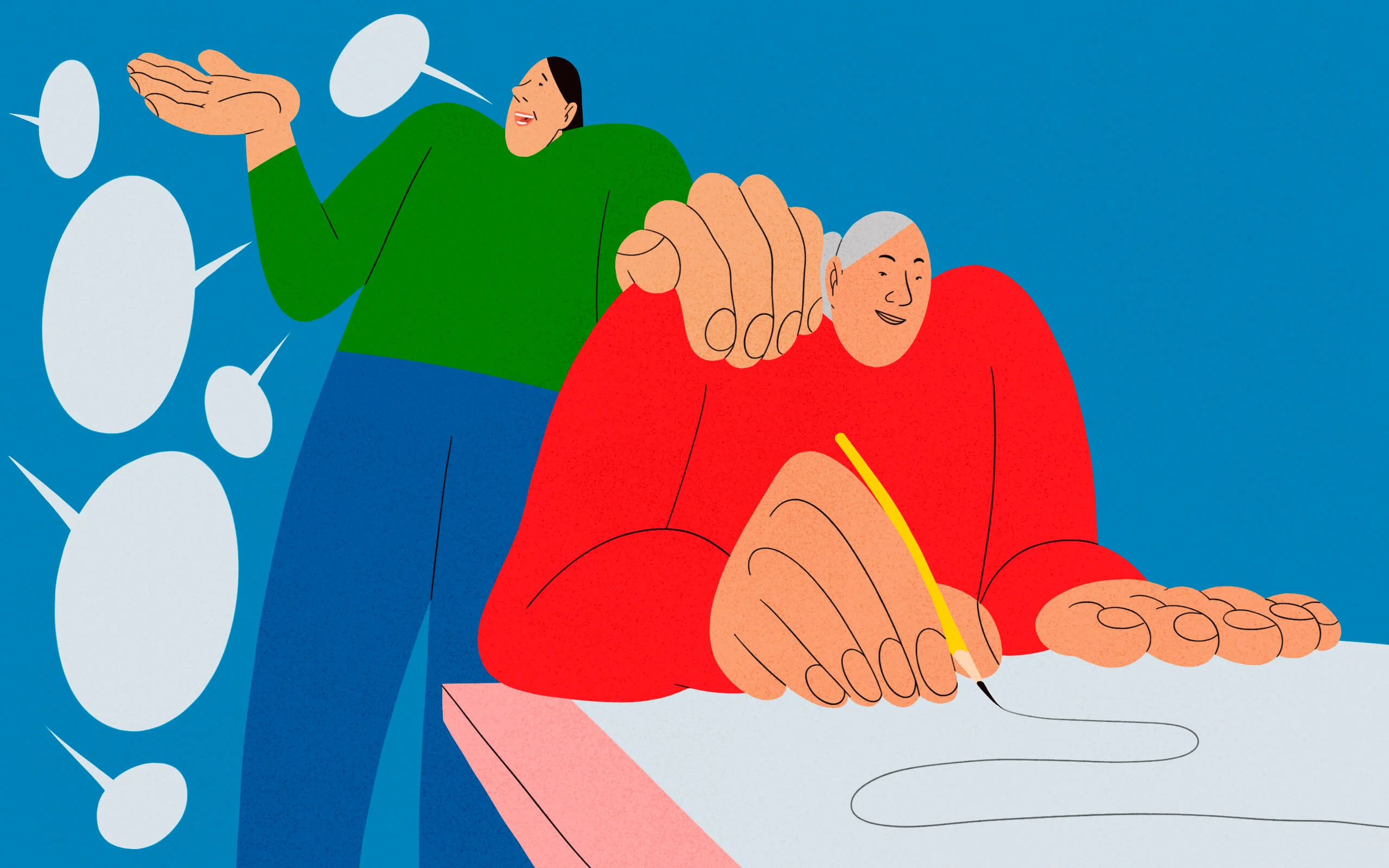
7. Don’t take it personally
Sometimes a long-term client will pass you over and choose someone else for a job. But don’t worry, that’s not necessarily the end of the relationship. That said, it could be the end, in which case, don’t take it personally. Sometimes that’s just the way work goes. Equally, you should feel comfortable letting go of a client if you can no longer service their needs or you’ve grown out of the relationship.
“I feel like discontinuing a reoccurring gig when a contact leaves or because the landscape of your own practice has changed isn't ditching them,” says Lauren. “It’s evolution.”
8. Get an agent
If all that has made your head spin then to hell with it, get an agent! They can take care of the hard work of dealing with clients for you. Philip swears by his.
“I figure my strengths lie elsewhere, so why not pay folk to do what they are good at,” says Philip. “It would be nice to keep all the money I earn but I accept the agencies fee as it means I don't have to do any searching for work myself. Plus, they negotiate my weekly rate. I would probably cave far quicker than they do.”
Make it rain, agent!
